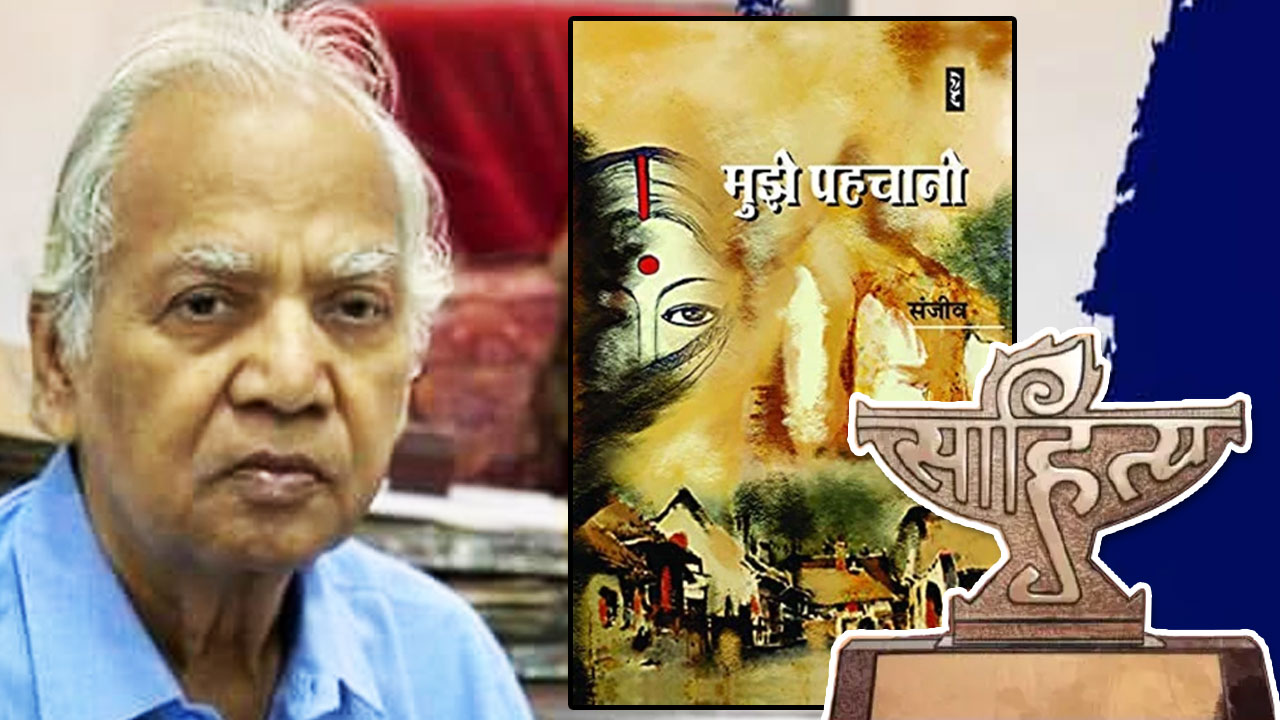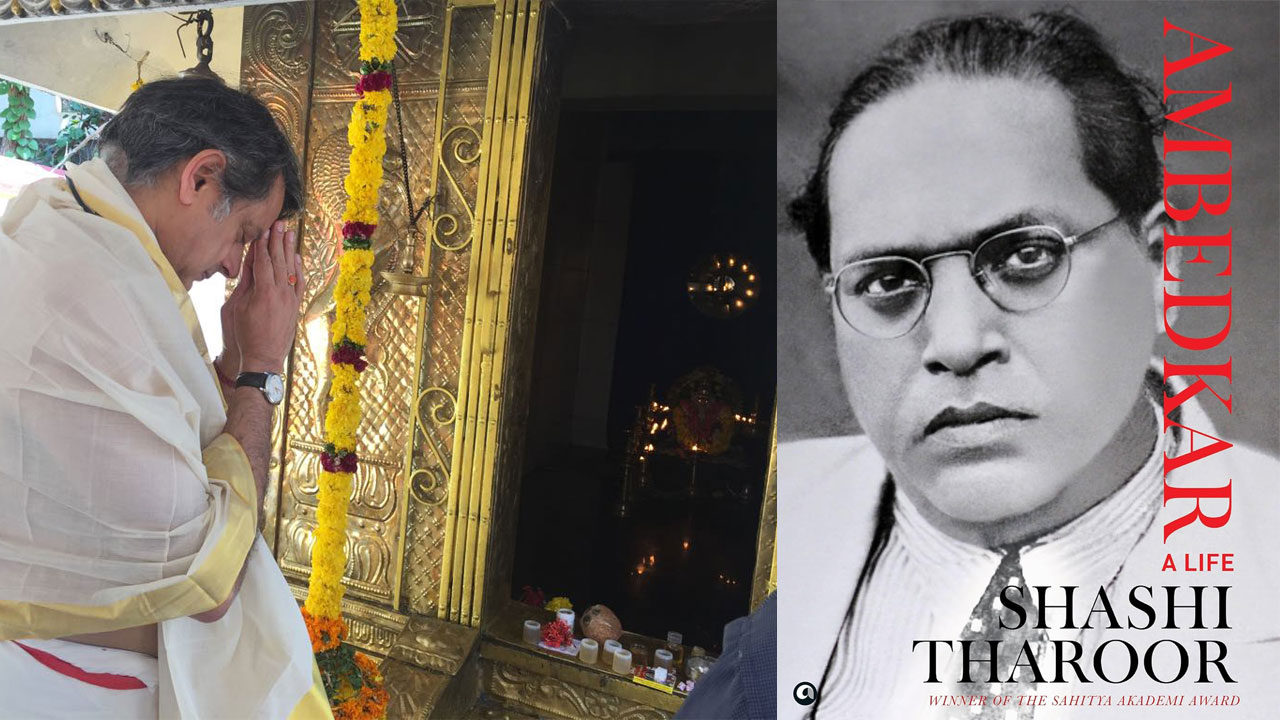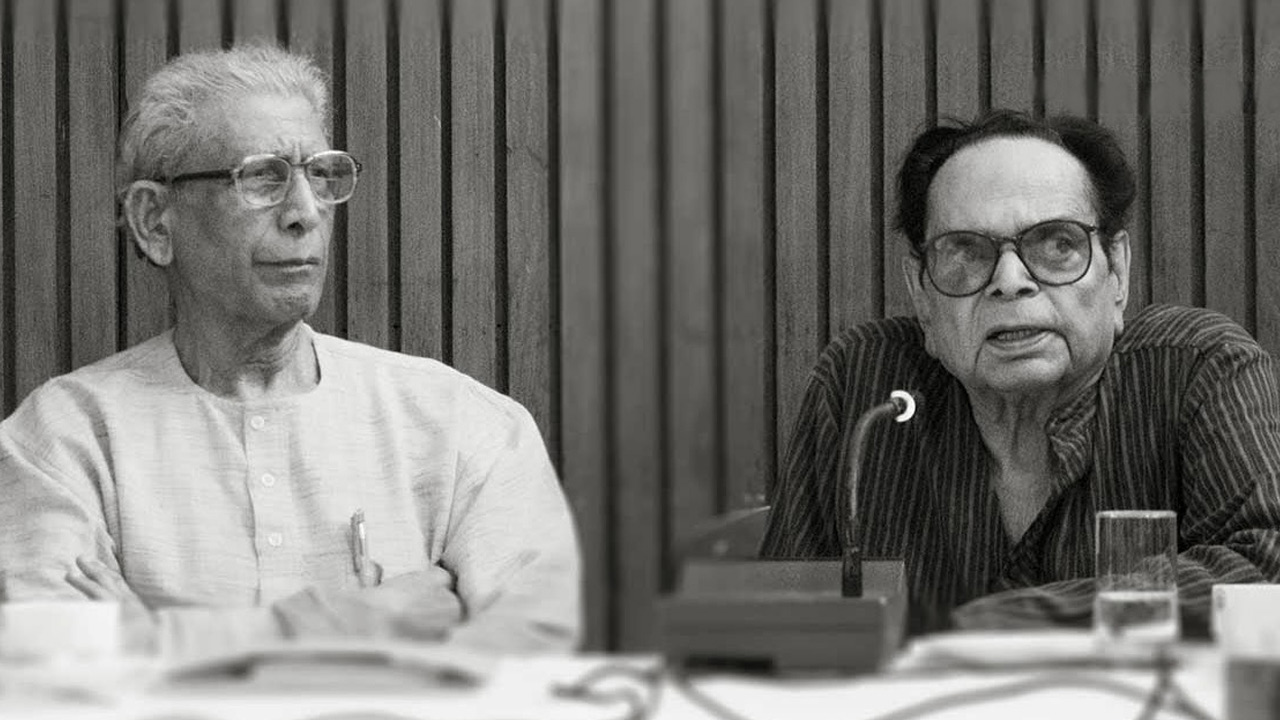This is the expanded version of the author’s address to a webinar titled ‘What has been the importance of the critical gaze of outsiders (non-Indians) on Indian society?’ organized by Forward Press on the occasion of the release of the book ‘Kabir Aur Kabirpanth’ (Kanwal Bharti’s translation of F.E. Keay’s book titled ‘Kabir and His Followers’) on 20 August 2022
At the outset, I want to make two things clear. One, that translating is not my hobby and two, that I never wanted to become a translator. It just so happened that my first job was as a translator. One fine day, standing outside my home in Rampur, Uttar Pradesh, I was reading the Urdu newspaper Nazim. A black-bearded Maulana, who used to pass by my house often, saw me read Urdu and asked, “Do you want to work?” At the time I was a first-year Intermediate student. I agreed to Maulana’s offer, leading to my appointment as an Urdu-Hindi translator at Maktaba Anhasnath, an Islamic publisher in Rampur, Uttar Pradesh. Two children’s publications were brought out by the publisher – Haadi in Hindi and Noor in Urdu. I was supposed to translate the Urdu text published in Noor into Hindi for Haadi. It was there that I learnt the art of translating into readable Hindi. Thus, my work as a translator began with rendering text in Urdu into Hindi.
The story of my initiation into English-to-Hindi translation is more interesting. Those days, English was taught from sixth grade onwards in government schools. I studied English up to High School and was grateful to get a pass mark. I was so weak in English that after High School, I stopped opting for it. But that made me feel somewhat inferior. My second job was with Sahkari Yug, a Hindi weekly published from Rampur. Its proprietor Mahendra Gupta was a well-known English-language journalist. My inferiority complex again came in my way, for my job required translating stories from the Northern India Patrika, which arrived by post, into Hindi for publication in the weekly. But I needed the paycheque. I bought a bulky dictionary to help me with the translation. Where I could not understand, I improvised. Mahendraji smiled while spotting my creative liberties. “Well, word-to-word translations are boring,” he would quip. That gave me some courage and I began trying to read and understand English. Subsequently, I translated an article by Dr Dharamvir Bharati, published in the Illustrated Weekly, into Hindi. I also translated Osho’s “Tantrik Sex”, besides a series of articles on Jawaharlal Nehru by Chalapathi Rau. I translated A.H. Khan’s piece on Nazeer Akbarabadi into Hindi as also Dilip Ganguly’s report on Lalit Narayan Mishra murder case. All these translations were published in Sahkari Yug. The need for earning a living thus turned me into an English-to-Hindi translator.
Later, I quit Sahkari Yug and launched my own imprint and printing press, Bodhisatva Prakashan. That was around 1979-80. At the time, I happened to meet Lalai Singh, and at his request I wrote a book, Dhammavijay and did an abridged translation of Ramasamy Naicker’s The Ramayana: A True Reading because not a single copy of the Hindi translation Sachchi Ramayan (published by Lalai Singh) was available. But neither of these two books were published under my imprint. It was eight months before these saw the light of day when a press at Masjid Moth in Delhi published them. That was because the district administration of Rampur had turned against me and had sealed my press, which was subsequently auctioned off by the bank with whose loan I had set it up. Thus, Ramayan: Ek Adhyayan was my first book translated from English into Hindi.
With my press at Rampur gone and left with no means of livelihood, I moved to Delhi. Like an itinerant, I spent my time in the capital moving from one place to another. In 1982, I got to meet the Buddhist monk Mahasthivir Sanghrakshita {born Dennis Philip Edward Lingwood (26 August 1925 – 30 October 2018)} from Norfolk (England), who was visiting India at the time. He presented me with a copy of his book Flame in Darkness on Anagarika Dharmapala (17 September 1864 – 29 April 1933). I knew nothing about Anagarika Dharmapala. The book introduced me to Dharmapala’s struggles and his contribution to the spread of Buddhism. I felt that the book should be translated into Hindi because Hindi speakers knew next to nothing about him. I made a proposal to this effect to Viharadheesh Bhandant Aryavansh Nayak Mahasthivir of the Buddha Vihar, Mandir Marg, New Delhi hoping that Buddha Vihar would publish the Hindi edition. Those days, I used to live in Motia Khan Buddha Vihar and would meet the Bhadant regularly. I had also helped in the proof-reading and printing of one of his books, which he had acknowledged in the book’s introduction. He told me that the problem would not be the printing but the copyright, which was with Triratna Granth Mala, Pune and without their permission, the book could neither be translated nor published. Now, this was a tricky situation. Around then, I had to move to Lucknow to join government service and fortunately, I received the patronage of Bhadant Bodhanand Mahasthivir, the head monk of the Buddha Vihar, Risaldar Park, Lucknow. What can be better patronage than getting a place to stay and food to eat? I lived there for around six months. It was during that time that I translated the introduction to Flame in Darkness and sent it to Triranta Granth Mala, Pune, along with a letter saying that if they liked the translation, they should permit me to translate the book. The reply came about a month later. To my immense satisfaction, they liked the translation and gave me the go-ahead to translate the rest of the book. The problem was solved. I completed the translation while staying at the Buddha Vihar, with Bhanteji’s help in understanding the technical words. Ultimately, the Hindi translation of the book was published in 1991 under the title Andhkar Mein Jyoti by the Triratna Granthmala, Pune. This was my second book translation.

My third book-length translation was Visa Ki Pratiksha Mein. While going through Babasaheb Dr Ambedkar: Writings and Speeches, a chapter titled “Waiting for Visa” in the fifth section of the 12th volume caught my eye. In this chapter, Ambedkar had related his personal reminiscences and experiences related to untouchability. These were very moving. I translated this work to enable Hindi speakers, and especially the non-Dalits, to know about what Ambedkar underwent. This translation was published by Vikas Narayan Rai through his organization Sahitya Upkram. It was so well received that not only did Sahitya Upkram publish its three editions but two other publications – Savitribai Phule Prakashan, Gorakhpur and Anand Sahitya Sadan, Aligarh – republished it in 2018 and 2019, respectively.
Also Read: Unpacking biases in literature and history
My fourth book-translation endeavour was Untouchables’ Movement in India by Professor Shyamlal, a former vice-chancellor of Jodhpur, Rajasthan and Patna Universities. The book was about the cultural history of the Bairwa community of Rajasthan. I translated this book on my own initiative and it was published by Swaraj Prakashan, New Delhi in 2011. I did not get any remuneration for the work. My sole objective was to make the Hindi translation available to readers.
Then I took up the translation of Katherine Mayo’s Mother India, again as a result of an inner urge, and not at anyone else’s request or offer. The author of this book had travelled to India and stayed here. Moreover, no Indian writer or historian has given such a vivid description of the socio-religious and political life of Indians, the animal-like existence of the Dalits, the inhuman and exclusionary behaviour of the Hindus towards them, the struggle for the emancipation of the Dalits, the hellish life of women and the wide gulf between the preaching and the practice of the religious leaders, politicians and social reformers. The book introduced me to the hitherto unknown realities and I felt it was my duty to apprise the Hindi readers of them. Without caring for who would publish the book, I began translating it. The work was completed in 2017 and was published two years later by Forward Press, New Delhi. This book filled a major gap and was well received. It drew appreciation from many writers.
Also read: ‘From Kabir and Raidas, love for mankind came to us in poetic form’
The sixth book that I translated was Professor Shymalal’s Ambedkar and the Bhangis: Efforts for their Upliftment (2018), which was published under the title Dr Ambedkar Aur Valmiki Samaj. This was also my own initiative. I believe that a true appraisal of the people of India and their history can be done by either Dalit researchers and scholars or foreigners, who are free from communal and casteist biases and whose thinking is impartial and detached. In this book, Professor Shyamlal has debunked the anti-Ambedkar disinformation campaign unleashed by the brahmanical network to ensure that the Valmiki community did not associate itself with Ambedkar’s movement and ideology. Shyamlal has thoroughly exposed Gandhi, the prime mover of this campaign. I felt that bringing out this book in Hindi would be a missionary work for the Valmikis’ cause. This book was published by Das Publications, Delhi in 2020.
Source Material on Dr Ambedkar and the Movement of Untouchables, published by the Government of Maharashtra in 1982, was the seventh book I translated into Hindi. Dr B.G. Kunte was the editor and B. N. Pathak the assistant editor of the original book. The editors had gleaned nuggets of information about Ambedkar’s personality, his struggles and the movement for the emancipation of the Dalits that he launched, from news reports and articles published by newspapers of the time as well as reports of the intelligence wing of the police. This was authentic documentation of a different kind – in the way it threw light on the Dalit movement from the perspective of its supporters and its opponents both. Many books have been written in Hindi on Ambedkar’s life and movement but none is based on such documents. I felt that it was necessary to make this documentation available to the Bahujan Hindi readers. This book was published on the Constitution Day, 2019, by Anand Sahitya Sadan, Aligarh, under the title Dr Babasaheb Ambedkar Aur Achhooton Ka Andolan.
My eighth book-translation is Kabir Aur Kabirpanth, published by Forward Press, New Delhi. This is a translation of Kabir and His Followers, written by F.E. Keay, a Christian priest and scholar from London. This was originally Keay’s doctoral thesis, submitted to the University of London in the 1920s. It took the form of this book in 1931. When this thesis was written, Kabir existed more in legends and less in history. Keay analysed these legends and established Kabir as a historical personality. His findings about Kabir are based on Kabir’s verses, found in Kabir Bijak and in the Adigranth of the Sikhs. “The Historical Kabir” and “The Kabir Literature” are important chapters of this book. I have not seen this kind of analysis on Kabir in any Hindi text. Keay was probably the first writer who refused to accept Ramanand as Kabir’s Guru and who marshalled facts to question the contentions made in this regard. He was also the first scholar to have done research on Kabir’s disciples, the sects established by them, the various branches of these sects and their literature and rituals. He located the mutts of Kabirpanth and debunked the myths associated with Kabir’s death and also put forward facts as he saw them. No one had requested me to translate this book. It was a project that I undertook myself. There was some delay in the publication of the translation but then, as they say, better late than never. Forward Press has brought it out well.
Besides these eight books, three of my translations are yet to be published. One is Mehtar Samaj Ka Sanskritik Itihaas, the Hindi translation of Prof Shyamlal’s yet another book. The second is a collection of Ambedkar’s articles on the revolt of 1857 and India’s annexation by the British. It is titled Angrezon Ki Bharat Vijay Aur Dalit Mukti. The third is Devtaon Ke Gulam, a translation of Katherine Mayo’s revolutionary book, Slaves of God, published in 1929. This book contains heart-wrenching stories related to the prevalence of the Sati system, untouchability and illiteracy among the Hindus, besides atrocities committed on the widows and others. The inclusion of the comments of Indian leaders, reformists and thinkers on these issues makes the book an invaluable document.
There is little doubt that the corpus of Indian scholars’ work on the history of Indian society, culture and castes is not even a tenth of the corpus by foreign scholars. Most of the Indian scholars could not rise above their religion and caste. They were dazzled by their religion – even the left-wing scholars of India were foolish enough to look for justice, science and history in the Vedas, the Upanishads and the Gita. Hindu scholars rejected and pushed into oblivion all the heroes of social change in India. It was the British who dug out the facts about them. They could do it as their vision was not narrow. It was the British who held censuses to find out the number of Untouchables in India. It was English scholar George Abraham Grierson who compiled data on Indian languages and dialects. George Weston Briggs unveiled the history of Chamars. John Henry Hutton did exemplary work on the Indian caste system and German Indologist Gustav Oppert traced the original inhabitants of India. India is indebted to these foreign scholars for opening a new world to its people. Many of their research works have not been translated into Hindi. That project waits to be undertaken.
(Translated from the original Hindi by Amrish Herdenia)
Forward Press also publishes books on Bahujan issues. Forward Press Books sheds light on the widespread problems as well as the finer aspects of Bahujan (Dalit, OBC, Adivasi, Nomadic, Pasmanda) society, culture, literature and politics. Contact us for a list of FP Books’ titles and to order. Mobile: +917827427311, Email: info@forwardmagazine.in)
The titles from Forward Press Books are also available on Kindle and these e-books cost less than their print versions. Browse and buy:
The Case for Bahujan Literature
Dalit Panthers: An Authoritative History






